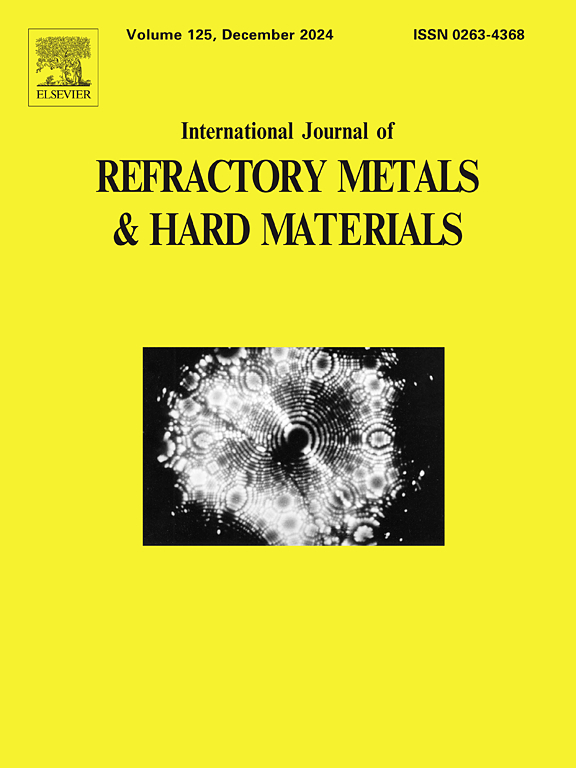The temperature dependence of hardness and toughness for polycrystalline diamond materials
IF 4.2
2区 材料科学
Q2 MATERIALS SCIENCE, MULTIDISCIPLINARY
International Journal of Refractory Metals & Hard Materials
Pub Date : 2025-02-25
DOI:10.1016/j.ijrmhm.2025.107123
引用次数: 0
Abstract
Polycrystalline diamond materials (PCD), known for ultra-high hardness and wear resistance, are widely used in cutting tools, petroleum drilling, and grinding machines. However, its excellent performance is limited by its extreme brittleness and sensitivity to high temperatures. Studying the hardness and toughness of PCD materials is crucial for evaluating their potential applications under extreme conditions. The hardness and toughness of PCD materials under different temperature and load conditions are examined in this paper. Vickers hardness and dynamic elastic modulus tests were performed to develop a mathematical model for evaluating fracture toughness. The results show that the hardness of PCD materials decreases as the temperature rises from 20 °C to 600 °C, with the rate of decline becoming more pronounced at higher temperatures. The fracture toughness is initially weakened with rising temperature but increases with further temperature rise after 400 °C. At different temperatures, the fracture and crack propagation of PCD materials are closely related to factors such as stress conditions, cobalt bonding phase, grain boundary structure, and internal defects. In particular, the mode of crack propagation is predominantly transgranular fracture, with very few instances of intergranular fracture.

多晶金刚石材料硬度和韧性的温度依赖性
聚晶金刚石材料(PCD)以其超高的硬度和耐磨性而闻名,广泛应用于刀具、石油钻井、磨床等领域。然而,其优异的性能受到其极端脆性和对高温的敏感性的限制。研究PCD材料的硬度和韧性对于评估其在极端条件下的潜在应用至关重要。研究了PCD材料在不同温度和载荷条件下的硬度和韧性。通过维氏硬度和动态弹性模量试验,建立了断裂韧性评价的数学模型。结果表明:在20 ~ 600℃温度范围内,PCD材料的硬度随温度的升高而降低,且温度越高,下降的速率越明显;随着温度的升高,断裂韧性开始减弱,但在400℃后,随着温度的升高,断裂韧性逐渐增加。在不同温度下,PCD材料的断裂和裂纹扩展与应力条件、钴结合相、晶界结构、内部缺陷等因素密切相关。特别是,裂纹扩展模式以穿晶断裂为主,很少出现沿晶断裂。
本文章由计算机程序翻译,如有差异,请以英文原文为准。
求助全文
约1分钟内获得全文
求助全文
来源期刊
CiteScore
7.00
自引率
13.90%
发文量
236
审稿时长
35 days
期刊介绍:
The International Journal of Refractory Metals and Hard Materials (IJRMHM) publishes original research articles concerned with all aspects of refractory metals and hard materials. Refractory metals are defined as metals with melting points higher than 1800 °C. These are tungsten, molybdenum, chromium, tantalum, niobium, hafnium, and rhenium, as well as many compounds and alloys based thereupon. Hard materials that are included in the scope of this journal are defined as materials with hardness values higher than 1000 kg/mm2, primarily intended for applications as manufacturing tools or wear resistant components in mechanical systems. Thus they encompass carbides, nitrides and borides of metals, and related compounds. A special focus of this journal is put on the family of hardmetals, which is also known as cemented tungsten carbide, and cermets which are based on titanium carbide and carbonitrides with or without a metal binder. Ceramics and superhard materials including diamond and cubic boron nitride may also be accepted provided the subject material is presented as hard materials as defined above.

 求助内容:
求助内容: 应助结果提醒方式:
应助结果提醒方式:


